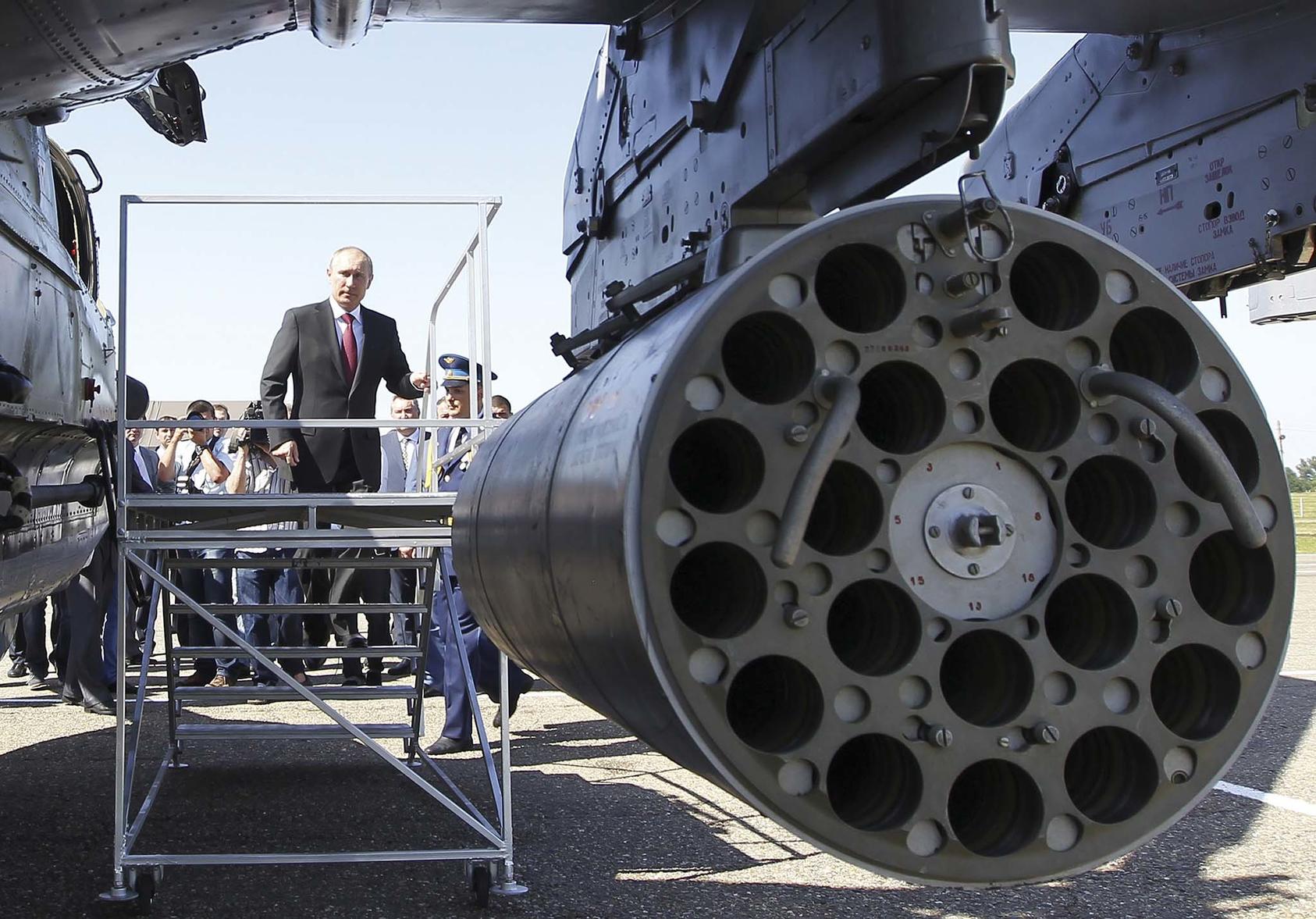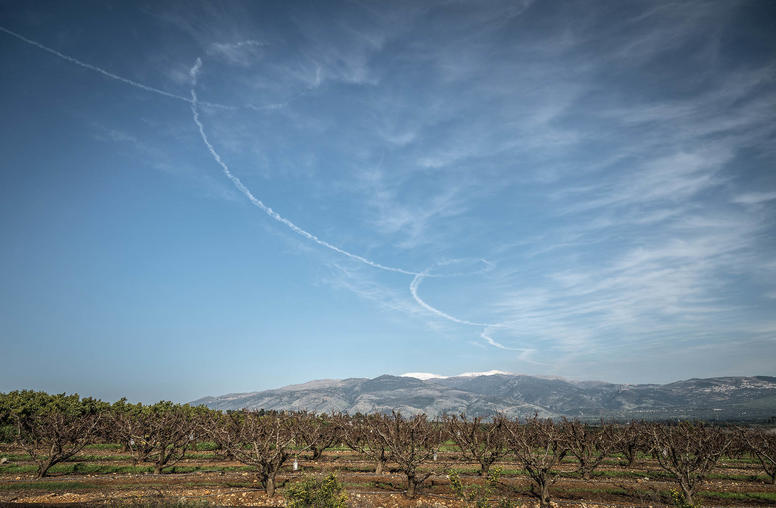What is Russia’s Endgame in Syria?
Lacking better options, Russia appears to be pursuing a 'spheres of influence' model.
Five years into Russia’s military intervention in Syria, understanding Moscow’s endgame could provide critical insights into the decade-long conflict’s trajectory, as well as Russia’s posture in the Middle East and beyond. Although still evolving and subject to internal debates, Moscow’s Syria strategy appears to be centered on a “spheres of influence” model. In this model, Syria is divided into distinct realms under the sway of competing external patrons. This approach accepts a complex interplay of military, political, and economic power between external actors Russia, Turkey, the United States, and Iran within the dynamic Syrian context. While this model seeks to maximize Russia’s advantages and provide some stability in a volatile conflict scenario, its success remains a longshot with challenges from the United States, domestic Russian constraints, regional dynamics, and the complex Syrian context.

Nevertheless, this “spheres of influence” model points to one potential outcome of the Syrian conflict and more significantly illuminates a potential Russian approach for both the region and, what some Russian strategists’ term, a “post-West” order. This order centers on a multipolar, competitive world characterized by a diminished role of the United States and an elevated Russian status. Thus, understanding Russia’s endgame in Syria may unlock insights into Moscow’s strategic posture in a complex 21st century world, with important implications for the United States. This analysis was based on numerous encounters with Russian experts in dialogues held by the Geneva Centre for Security Policy (GCSP), and other institutions from 2018-2021. The analysis and conclusions that follow stem from the many discussions that occurred over more than two years and are solely those of the author. This paper does not represent the views of the GCSP or the U.S. Institute of Peace where the author is a senior advisor.
Background and Strategic Framing
By most accounts, Moscow’s 2015 decision to intervene militarily in Syria turned the tide of the war in favor of the Assad regime. Russian airpower combined with Iranian-backed militias on the ground played a decisive role in preventing the Assad regime’s collapse by neutralizing a large segment of armed opposition and brutally reasserting regime control over much of Syria.
As of early 2021, the conflict appears to be entering a period of stalemate marked by more static conflict lines. However, the conflict is not entirely “frozen” as Syria remains inherently volatile. Some areas—notably Idlib and parts of northeast Syria—still hold the potential for major contestation. Yet, most regions will not be subject to large-scale military offensives, shifting frontlines, or massive displacement.
Russia’s motivations, goals, and strategy are increasingly discernible against this backdrop of a “stable-unstable” Syria. Having achieved its primary objective of rescuing the regime and bolstering its grip on power, Russia now appears focused on developing its endgame strategy.
Specifically, Russia’s endgame in Syria seeks to promote Moscow’s interests in three concentric arenas: (1) Syria’s multi-layered conflict; (2) Russia’s role in regional/Middle East dynamics; and (3) Moscow’s broader conception of an evolving global order. These elements are loosely inter-connected. Russia’s dominant posture in Syria serves as a platform for its engagement across the Middle East, while also advancing a worldview that seeks to further erode the U.S.-led, rules-based international order.
Russia’s endgame strategy is still somewhat inchoate. Several factors—some potentially insurmountable—inhibit Moscow’s ability to develop a coherent and sustainable vision that translates its military gains into a political settlement favorable to Russia and the Assad regime. These factors include: divisions within Russia’s national security apparatus (especially between the ministries of defense and foreign affairs); strong international opposition to the Assad regime; the Syrian conflict’s complexity including its many foreign stakeholders; and major constraints on Russia’s power projection and ability to shape Syria’s conflict dynamics.
Largely pragmatic and opportunistic, Russia’s Syria endgame nonetheless contains elements of a broader “grand strategy.” For Russia, Syria’s strategic importance resonates beyond the Middle East as a test case for Russia’s desired “post-West” world. This multipolar, competitive “post-West” world features Russia’s elevated status at the expense of diminished U.S. power. Nowhere is this vision more apparent for Russia than in the Middle East where Moscow seeks to exploit the perception of a U.S. withdrawal from the region to project its own influence.
Russia’s Endgame in Syria: A “Spheres of Influence” Model
Russia’s endgame emerges from a position of weakness rather than strength. Cognizant of its limitations in Syria, Russia appears to be constructing a pragmatic endgame strategy that implicitly acknowledges Moscow’s many shortfalls in Syria, while exploiting openings to consolidate its military gains. Russia looks to be settling for an endgame in Syria that stakes its claim on key strategic assets, while ceding power and influence in areas beyond its control. In its ideal, this endgame strategy works in concert with partners with whom Russia can cooperate, while undermining rivals who threaten Moscow’s strategy.
Moscow’s Syria strategy is informed by the so-called “Primakov Doctrine.” As Eugene Rumer asserts in a 2019 paper, “Named after former foreign and prime minister Yevgeny Primakov, the Primakov doctrine posits that a unipolar world dominated by the United States is unacceptable to Russia.” The doctrine’s key elements include the push for a multipolar world with major powers seeking to counterbalance the United States, and Russia playing an essential role in that effort. Rumer notes, “The Syrian operation is a perfect example of the Primakov doctrine in action.”
In Syria, Russia’s “spheres of influence” model references 19th and 20th century geopolitics, but also reflects an updated view that recognizes the limits of Russian power. It is defined by a malleable approach in Syria where Russia shapeshifts depending on the imperatives of different subregions in Syria’s complex conflict. Bound by Syria’s complex conflict dynamics, Moscow’s strategy acquiesces to Syria’s de facto zones of control that essentially translate into three major spheres of influence: Russia in the west, particularly along Syria’s strategic spine; Turkey in the north; and begrudgingly for Moscow, the United States in the east. Though within this crude schema, several nuances exist.
While a consequential player in Syria, Iran does not exert control over a specific territorial sphere of influence, given the more covert nature of its power in Syria. Instead, Iran and its proxies will project influence in strategic areas under regime/Russian control. These areas include southern Damascus, pockets in the southwest and the southeast—particularly around the Abu Kamal border crossing and the Deir Zor countryside, and micro-areas in and around Aleppo and Hama governorates.
Turkey’s sphere of influence will be defined by its current zones of control: Euphrates Shield, Afrin, and Peace Spring. The March 5th cease-fire negotiated with Russia will roughly delineates a fourth zone in northern Idlib governorate stretching north from the M4 highway, although these lines have yet to be solidified.
While the United States is the primary power in eastern Syria, the area remains less stable, characterized by continued power competition with Russia. Though limited, Russian influence in the northeast is exercised through its joint patrols with the Turks in some border areas, cooperation with the Kurdish-led Syrian Democratic Forces (SDF) in others, and being embedded with the regime in limited spaces such as the Qamishli airport. Russian influence is also projected in attempts to encroach on areas where U.S. forces are the dominant external player, including around Hasakeh and the middle and lower Euphrates valley.
Moscow’s “spheres of influence” model adheres to the many constraints Russia faces, both in Syria as well as domestically, necessarily inhibiting its ability to project maximum power. While Moscow professes the importance of restoring Syria’s full territorial integrity (and the Assad regime demands nothing less), the Russian endgame recognizes that powerful external actors will continue to exert control over important swaths of Syria. Rather than bearing the risks and undertaking the significant investment necessary to oust these foreign powers from Syria, Russia instead has developed a synergistic partnership with one—Turkey—while limiting its opposition to provocative probes of the other—the United States.
This is an excerpt from a paper, “Understanding Russia’s Endgame in Syria: A View from the United States,” originally published by the Geneva Centre for Security Policy as part of its Syria Transition Challenges Project.



